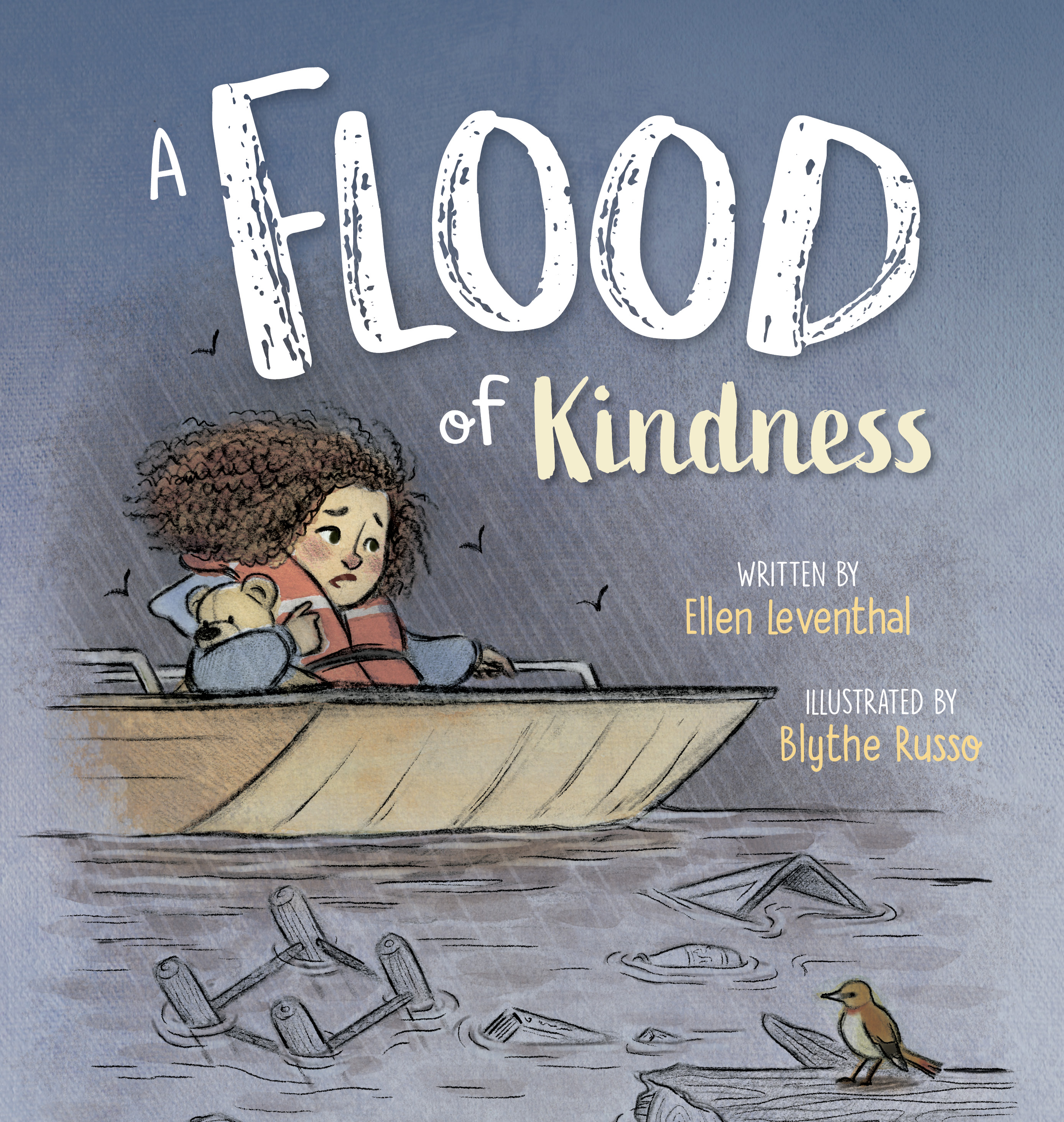Meet Ellen Leventhal
Ellen Leventhal has been writing for as long as she can remember. She is the co-author of Don’t Eat the Bluebonnets, a 2017 Mighty Girls Book pick, and the author of Lola Can’t Leap. Ellen is an active member of SCBWI, as well as a member of Julie Hedlund’s 12×12 Picture Book Challenge. She lives in Houston, Texas, where she can be found working as an educator, wandering the aisles of bookstores, and doing school author visits.
Where did the idea for A Flood of Kindness come from? How did you decide this book was needed?
Between Memorial Day, 2015 and August 2017, my house flooded three times. However, who really gave me the idea was Mr. Rogers. After the Memorial Day flood in which we lost pretty much everything, I tried to focus on Mr. Rogers’s thoughts of looking for the helpers. It wasn’t hard. I was amazed with how easy it was to find the helpers. Kindness abounded. AND I found that although I lost pretty much all my material possessions, we were lucky in many ways. I began to help those who had even less and saw how that helped me. I was teaching and worked with a lot of children who were impacted by the flood. We did a lot of talking and writing together, and the children came up with ideas about how they could help others. But it wasn’t until after Hurricane Harvey when many of us again lost everything, including our homes, that I thought about writing a children’s book about how kindness is healing. (I had written blogposts, essays, etc already). I knew it was needed because I saw so many children who not only lost their homes and possessions, but they felt helpless. I wanted to show children that they are empowered, if even in a small way. (FYI…My home was totally redone after Memorial Day and fixed up after the 2016 flood, but we had to knock down after Harvey.)
While grief and loss are often considered related to a death, children can experience both emotions in other ways as well—including a flood that displaces a girl and her family from the comfort of home. How does your book tackle these difficult emotions?
The first thing I hope my book does is validate children’s feelings. Losing your home is traumatic, and children cannot always see the big picture. We need to understand and accept that whereas adults may focus on the big “to do list” (Insurance, builders, finding a place to live, etc.) children do not always have something to focus on except their loss. The loss of a treasured toy or stuffed animal is the loss of security to many children, so imagine how big a loss of your home must feel. I hope my book validates children’s emotions and also gives them a way to help them feel empowered. The feeling of loss of control can be overwhelming, and doing small acts of kindness can give children (and adults!) a sense of purpose.
What advice do you have for parents and teachers helping children through stages of grief or loss?
I’m not an expert, but again, I think the first thing parents and teachers can do is validate the child’s feelings. What may not be earth shattering to an adult, may be to a child. I think we need to understand that changes in behavior are normal under these circumstances. After validation of feelings, I think helping children through the stages of grief and loss will vary depending on the child and the loss. In the case of a flood or fire, perhaps including the child in the rebuilding effort (what color would you like your room? Should we get flowers for the front yard?) would be helpful, but the loss of a person, is a different thing. Maybe one thing parents and teachers can do is understand that they may need help in this and ask for it.
As the title suggests, there’s also a strong message of kindness in your book. How do the characters in your book display kindness?
The main message of kindness comes at the end when Charlotte acknowledges that someone was kind to her by giving her a book, and now it is her turn to be kind to someone else by giving the little boy her teddy bear. (Which empowered her and helped her heal) However, I tried to sprinkle kindness throughout the book starting when people came to rescue Charlotte’s family. People give her clothes, shelter, and food. Charlotte watches other people helping each other and begins to wonder if she can do that. (*in my original ms I suggested the last pages show Charlotte and other people helping clean up the neighborhood. I don’t know if that made the cut)
What are some practical ways to show kindness to others, particularly during times of loss?
I think children can show kindness in the same ways adults can…just on their scale and their terms. Even with children, I think validating someone’s loss is important. A child can do that non-verbally with a hug, sharing something, asking someone to sit with them, etc. Certainly, other ways to show kindness abound. 😊 Listening to someone, calling to check on them, and for someone who has lost material things, giving them things to replace their losses are all ways kindness can be shown during times of loss.
What do you hope young readers will take away from your book?
I hope people take this book as a story of empathy, hope, and empowerment. My wish is that young readers will understand the power of kindness and the fact that they are empowered to make things better through small acts of kindness.
Click here to learn more about A Flood of Kindness
